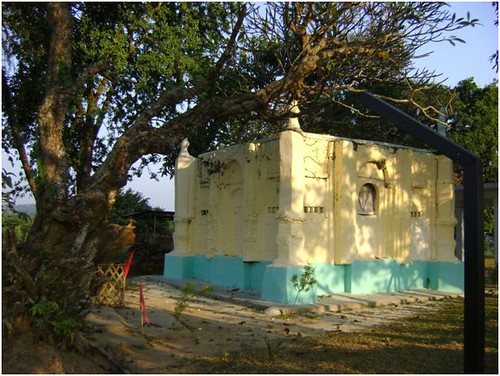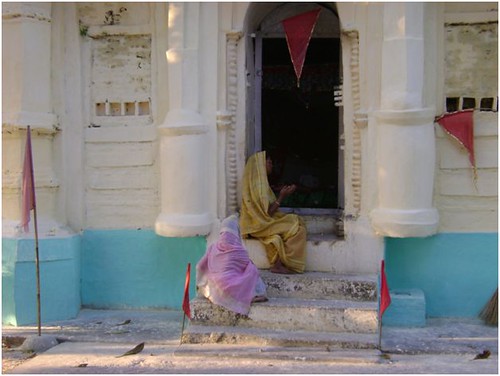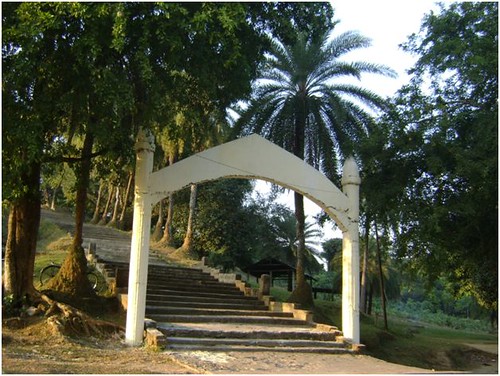By Anjuman Ara Begum, TwoCircles.net,
Guwahati: Right at the Indo-Bangla broder, alongside the Dalu-Mahendraganj-Mankachar border road in West Garo Hills, Meghalaya, stands the Dargah Sharif of Peer Hazrat Shah Kamal Baba, popularly known as Pirsthan or Dargah, a symbol of communal harmony since centuries.
The Dargah is also characterized by a continuous traditional annual Urs (prayer-fair) that has existed since the pre-partition of East Bengal and held at the Pristhan, close to Mahendraganj, West Garo Hills. Devotees from across the state and neighbouring states pour in hundreds to seek blessings from the Peer Baba at his shrine. Pirsthan is also famous because it is believed prayers here always find favourable response. The Pirsthan is also known for the presence of a stone believed to be of Devi Kamakhya of Mankachar, Assam. A big Kamakhya temple is situated there in Mankachar, Assam about 25 km away from the Pirsthan.

The Pirsthan
“I got a lot of ‘things’ from Baba. He saved me from a lot of trouble. Not only me but many of my friends and family members living in Punjab, Rajasthan, Haryana were benefitted by the blessings of Baba. We have deep respect for Baba. As a mark of my respect and gratitude, I constructed the gate and repaired many a times the steps leading to the shrine’, said Joy Kumar, a devotee from Mahendraganj.
It is believed that the shrine was built in 16th century and it was built in just one night time. The structure of the shrine represents similarity to the Moghul architecture. The shrine had no roof but later devotees put roof to protect it from rain.

Devotees praying at the Pirsthan
However, some people are unhappy with the way the shrine space is used and the way prayers are offered to the Pirsthan. ‘In Islam there is no place for grave worship. But people have turned this place into a worship place which is not representative of Islam’, a Muslim devotee commented.
Last year Indo-Bangla border fencing construction passed encircling the shrine. In the phase-I construction of fencing Dargah fell outside the fencing as it is located within 50 yards from zero lines. Abdullah, the care taker of dargah informed that ‘in 2009, Dargah was ‘taken inside’ India by constructing the fencing within 50 yards. ‘Several flag meetings were held to fix this as there was strong opposition from Bangladesh. Sometimes the workers worked at night to avoid any unpleasant incident’, said Abdullah. He also informed that people’s movement across the fencing during the ‘dargah mela’ has been restricted since 2007. This is because, he said, it’s ‘difficult to guarantee the return of the Bangladeshis’. The border fencing has now put the Dargah inside India. The fencing passed behind the dargah. ‘We requested the authority to put the graves located in the shrine area inside the fencing area. But it didn’t happen. Devotees from Bangladesh long to see the Pir’s grave. People from Bangladesh protested fencing the dargah site as it will prevent them to have a look of the grave and offer prayers. Border forces from both the sides conducted several ‘flag meetings’ to resolve the issue. The whole fencing was erected in a rush to avoid unwanted opposition from people from the other side’, said Abdullah.

Entrance of the Pirsthan

Gate constructed by Joy Kumar
Nevertheless, the Dargah remained an icon of the place and put the somewhat remote place like Mahendraganj into the tourist map of Meghalaya. The Waqf Board of Meghalya developed the place in the year 2008-2009 and made it a place of interest for the tourists. It will definitely remain a symbol of communal harmony for the people for centuries to come.

